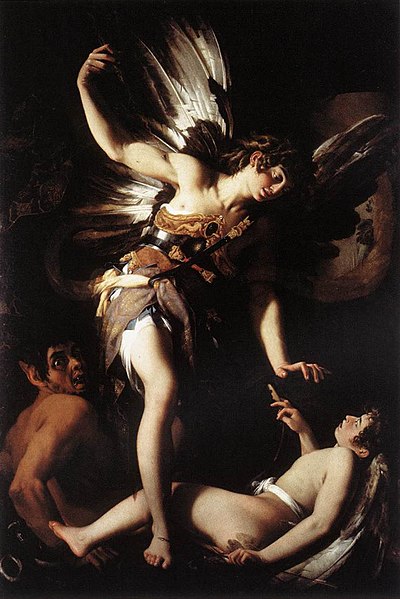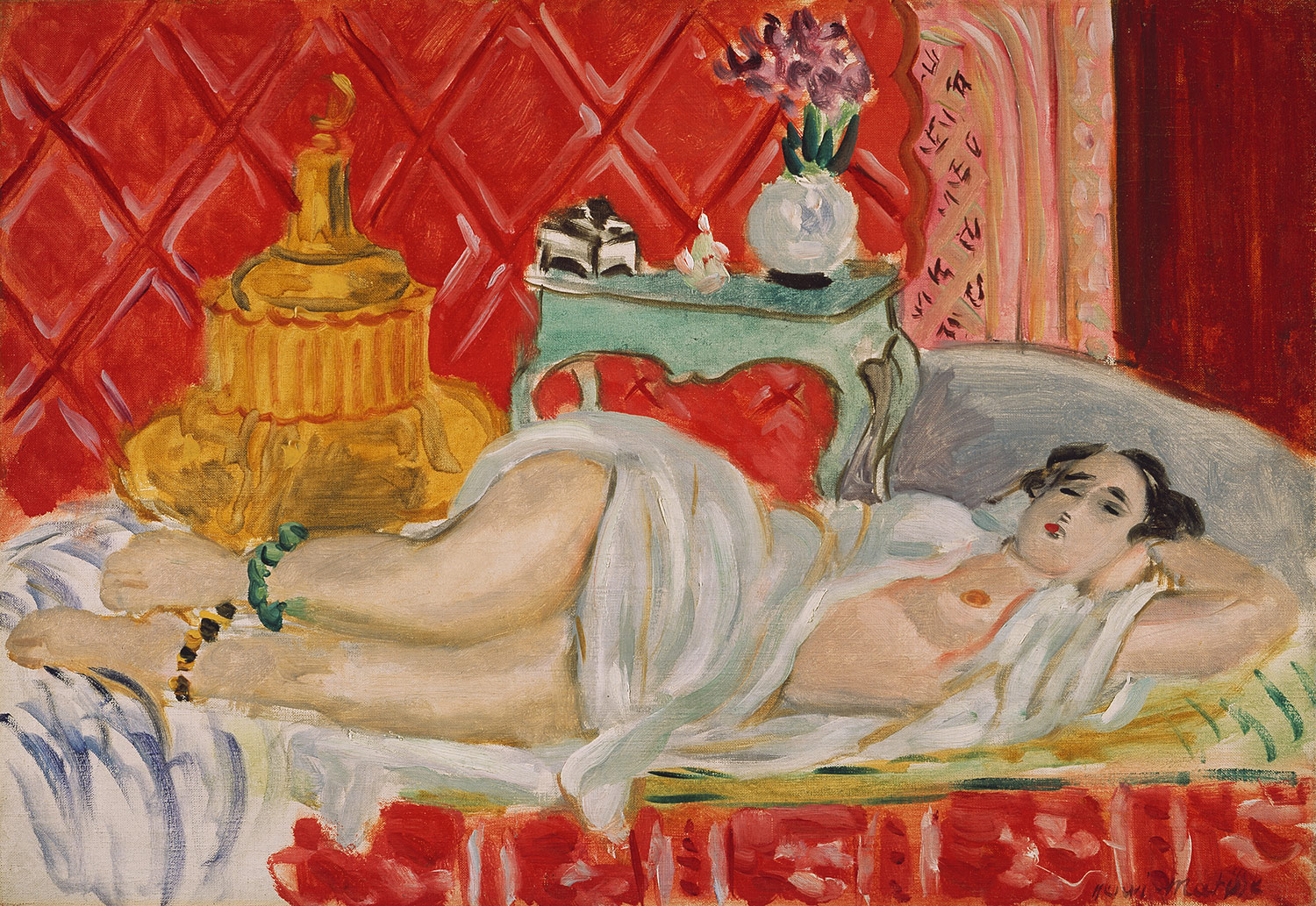Sfumato - One of four styles of painting during the Renaissance, meaning "without lines or borders, in the manner of smoke or beyond the focus plane," which can be seen here in the shading around la Gioconda's eyes.
Detail from "Mona Lisa" by Leonardo da Vinci, 1519.
Pentimento - An alteration in a painting, evidenced by traces of previous work, showing that the artist has changed his mind as to the composition during the process of painting.
Detail from "Salvador Mundi" by Leonardo da Vinci
Chiaroscuro - One of four styles of painting during the Renaissance, meaning "light-dark," and indicating clear tonal contrasts which are often used to suggest the volume and modelling of the subjects depicted.
"Sacred and Profane Love" by Giovanni Baglione, 1603

Contour Line - Bold, dark, dividing lines used by an artist to sketch the boundaries of a form or stress their symmetry.
"Diego" by Alberto Giacometti
Complementary Color Scheme - Colors that are opposite each other on the color wheel are considered to be complementary colors (example: yellow and violet). The high contrast of complementary colors creates a vibrant look especially when used at full saturation.
Painting by John Tubbs

Analogous Color Scheme - Analogous color schemes use colors that are next to each other on the color wheel. They usually match well and create serene and comfortable designs. Analogous color schemes are often found in nature and are harmonious and pleasing to the eye.

Monochromatic - Only using one color, and various shades of that color.
Alexa Meade

Iconography - A particular depiction of a subject in terms of the content of the image, such as the number of figures used, their placing and gestures. For example, here Christ holds existence in his hand, and his right hand reflects a sign that means "peace." Iconology is the study of iconography.
"Salvador Mundi" by Leonardo da Vinci

Foreshortening
"The Lamentation over the Dead Christ" by Andrea Mantegna

Crosshatching - The technique of using intersecting lines and the spaces in between them to depict shadows. Used in pencil drawings and etchings.
"Jeans" by Ashley Castillo

Modernism - A revolt against the conservative values of realism and deism.
"The Gate" by Hans Hofmann
"The Gate" by Hans Hofmann

Post Modernism - The critique of the modernist scientific mentality of objectivity and the progress associated with the Enlightenment. It postulates that all apparent realities are only social constructs and thus, subject to change.
"House of Stairs" by M. C. Escher, 1951

Picture Plane - The imaginary flat surface which is usually located between the station point and the object being viewed and is ordinarily a vertical plane perpendicular to the horizontal projection of the line of sight to the object's order of interest.
Brunelleschi's Baptristy
Foreground - The part of a view that is nearest to the observer. The model here is in the foreground.
Midground - The part of a view that is not nearest to the observer nor is it furthest. The table here is in the midground.
Background - The part of a view that is furthest from the observer. The wall here is in the background.
"Reclining Odalisque (Harmony in Red)" by Henri Matisse, 1927.




No comments:
Post a Comment